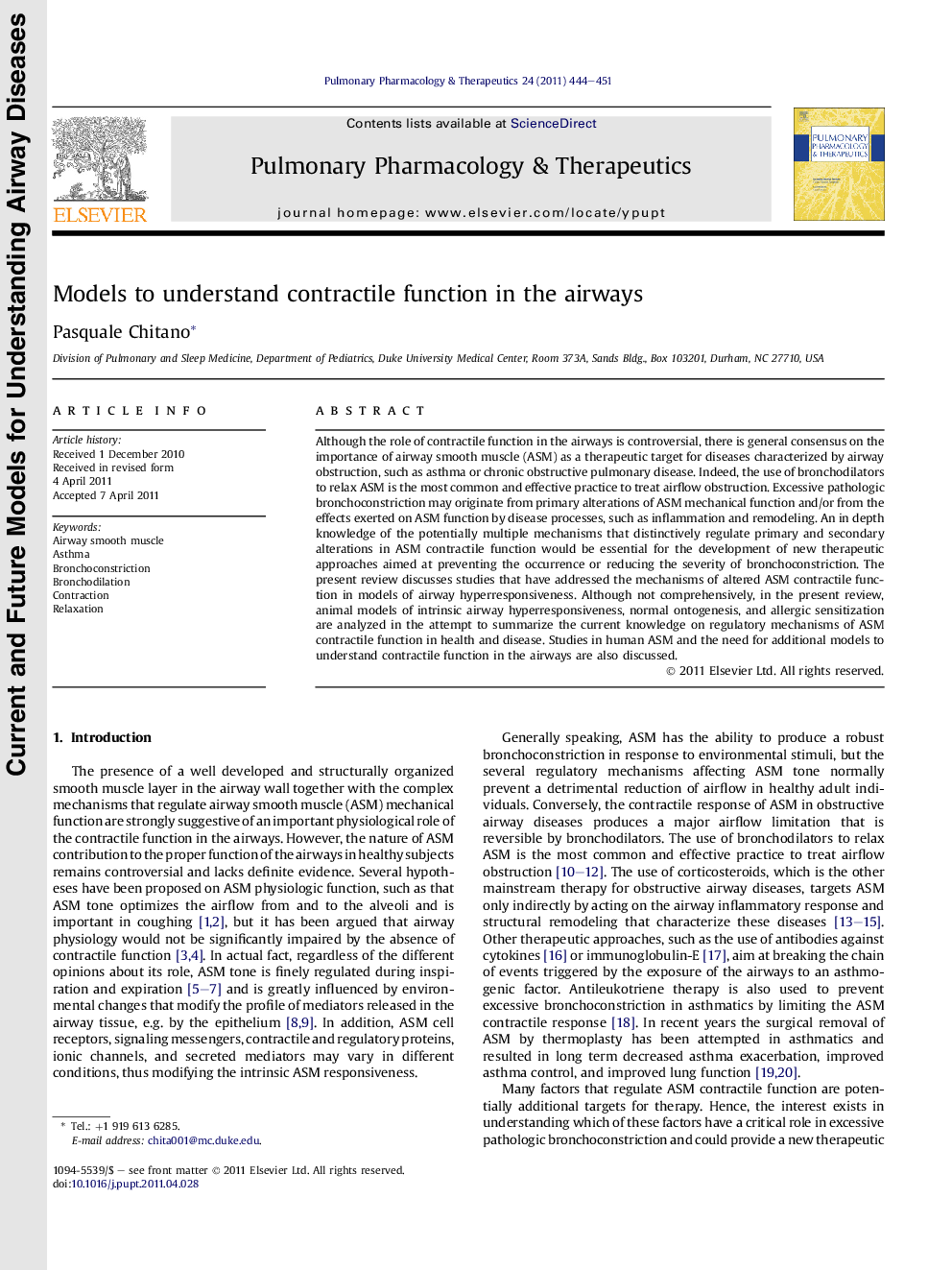| Article ID | Journal | Published Year | Pages | File Type |
|---|---|---|---|---|
| 2567350 | Pulmonary Pharmacology & Therapeutics | 2011 | 8 Pages |
Although the role of contractile function in the airways is controversial, there is general consensus on the importance of airway smooth muscle (ASM) as a therapeutic target for diseases characterized by airway obstruction, such as asthma or chronic obstructive pulmonary disease. Indeed, the use of bronchodilators to relax ASM is the most common and effective practice to treat airflow obstruction. Excessive pathologic bronchoconstriction may originate from primary alterations of ASM mechanical function and/or from the effects exerted on ASM function by disease processes, such as inflammation and remodeling. An in depth knowledge of the potentially multiple mechanisms that distinctively regulate primary and secondary alterations in ASM contractile function would be essential for the development of new therapeutic approaches aimed at preventing the occurrence or reducing the severity of bronchoconstriction. The present review discusses studies that have addressed the mechanisms of altered ASM contractile function in models of airway hyperresponsiveness. Although not comprehensively, in the present review, animal models of intrinsic airway hyperresponsiveness, normal ontogenesis, and allergic sensitization are analyzed in the attempt to summarize the current knowledge on regulatory mechanisms of ASM contractile function in health and disease. Studies in human ASM and the need for additional models to understand contractile function in the airways are also discussed.
